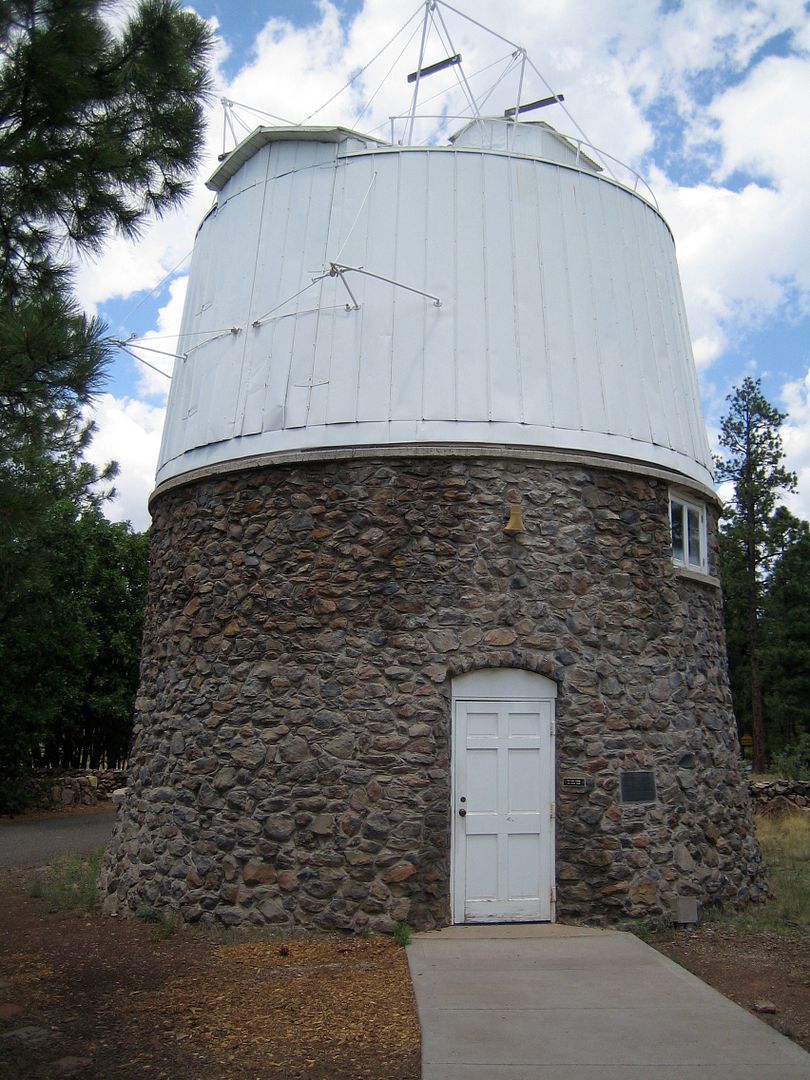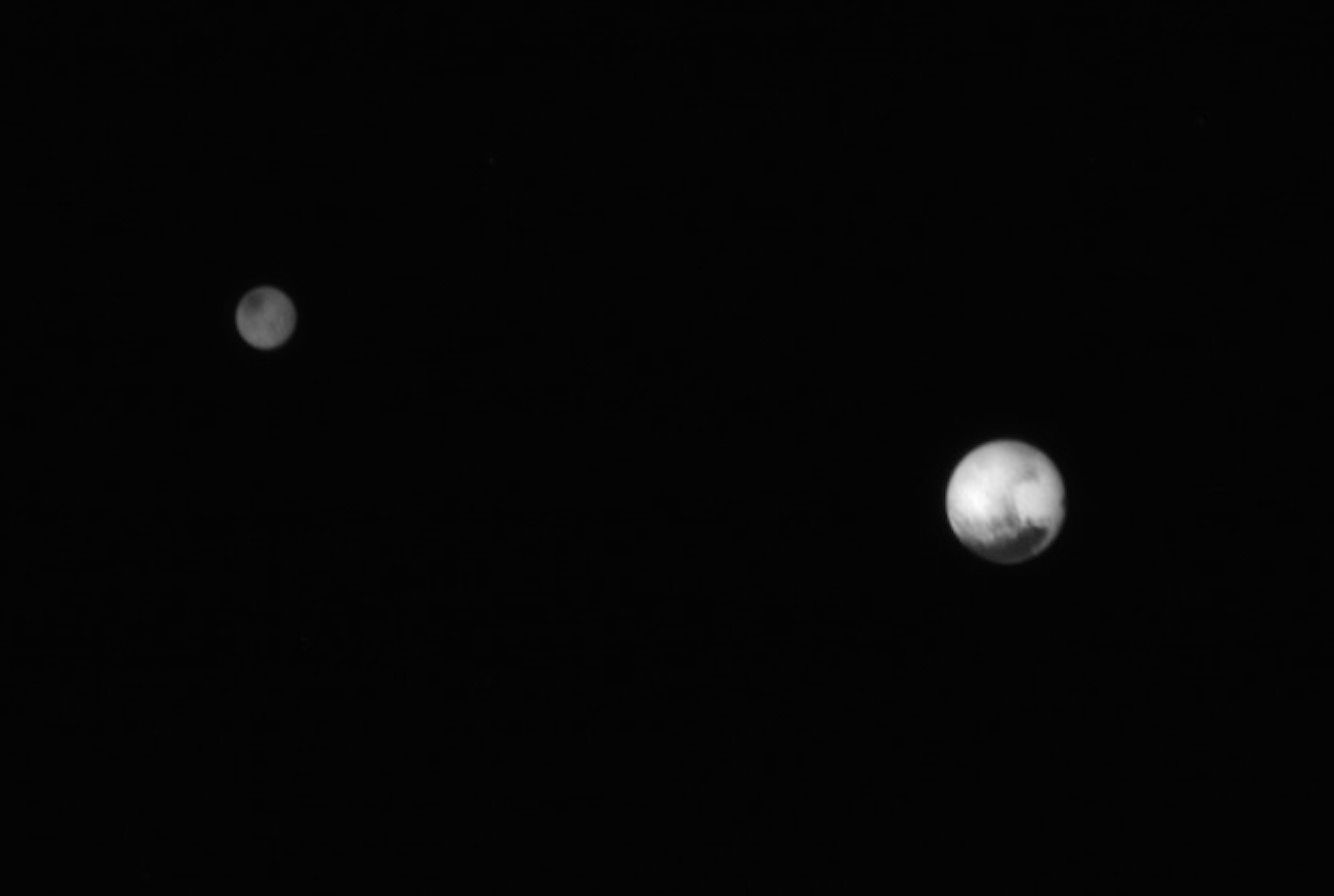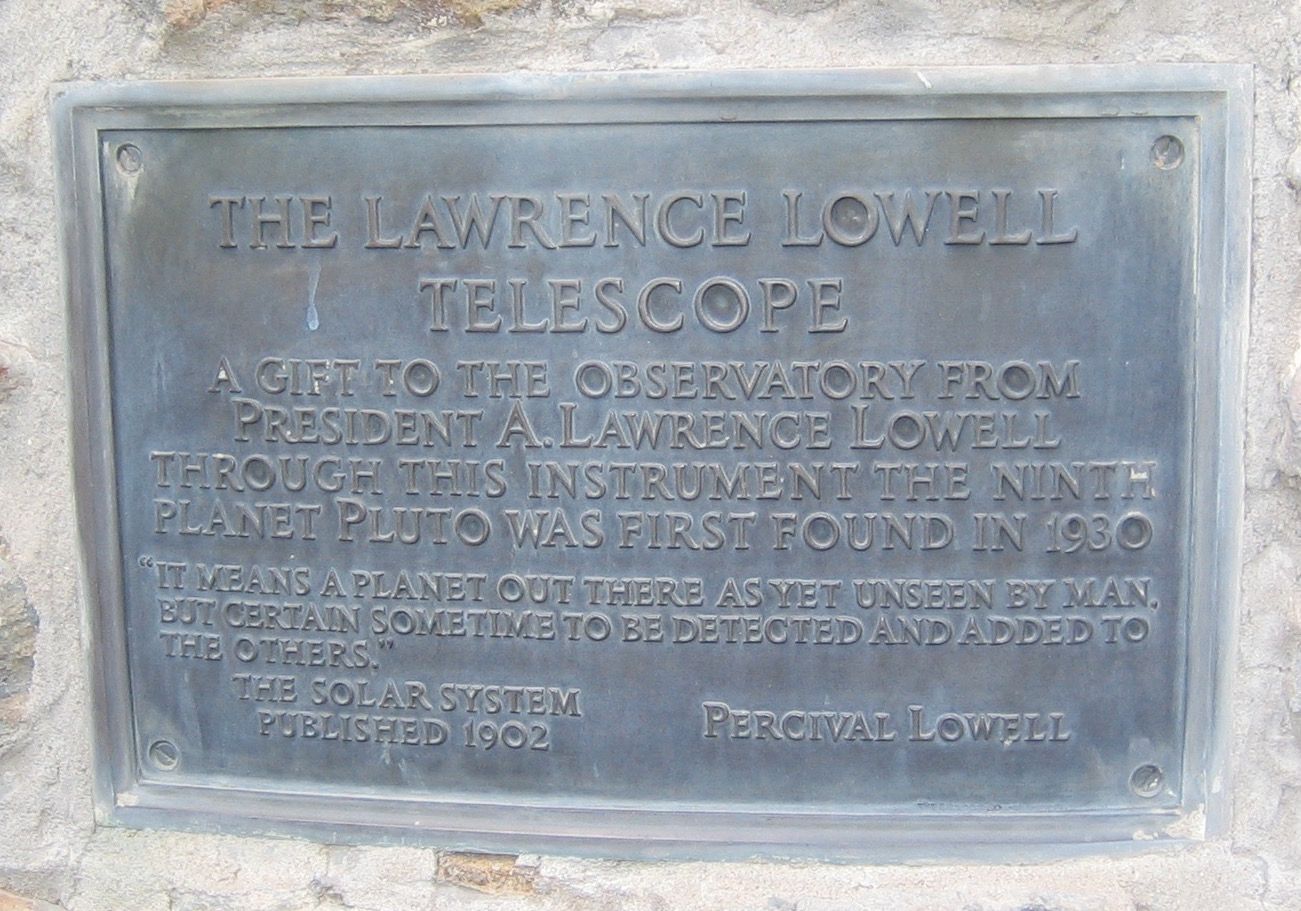The New Horizons space probe is zooming along headed toward its July 14th flyby of Pluto.
Even though it still has just under five days until its closest approach, it is already returning amazing images like the one above that show Pluto (right) and its largest moon Charon (left) in wonderful detail. The image above was taken July 7th from a distance of 7.8 million kilometers (4.8 million miles).
Living in the future as we are, we all have a front row seat to the encounter. Raw images like the one above are posted online almost as they are received. (Of course, that's done for other missions too - check out the raw images for Cassini at Saturn.) Don't expect to see the best images right away though. New Horizons will not be returning any data during the actual flyby of the Pluto system. At that time all its efforts will be focused on collecting data. The data will come back afterwards, when every moment is a little less precious. Here's a complete rundown on everything that is expected and when the data will return to Earth.
Even though we will not be getting immediate results from the encounter, lots of observatories, science centers and planetaria will be hosting Pluto Palooza events for the flyby.
Certainly one of the best places to have a Pluto Palooza is Lowell Observatory, where Pluto was discovered. Their celebration runs an entire week! And why not. There's a very special Pluto connection and history there.
Known as the Lawrence Lowell Telescope, this 13-inch astrograph was used by Clyde Tombaugh to conduct the photographic survey that discovered Pluto.
The 13-inch "Pluto scope" is a photographic instrument. There's no way to look through it. It was designed to have light collected and focused onto a glass photographic plate. The square area at the bottom of the telescope is where the plate goes. The telescope at Lowell Observatory is shown daily on guided tours. It is well worth visiting, even without a Pluto Palooza in progress.
Pluto was the first member of the Kuiper Belt to be discovered. While classified as a planet for 76 years, Pluto is now officially known as a "dwarf planet." I'm not getting into the planet debate here, but what we already know for certain is that Pluto and its system of moons are interesting and temporarily unknown. This will be our first look at these strange new worlds. I can't wait to see what's found.
Even though it still has just under five days until its closest approach, it is already returning amazing images like the one above that show Pluto (right) and its largest moon Charon (left) in wonderful detail. The image above was taken July 7th from a distance of 7.8 million kilometers (4.8 million miles).
Living in the future as we are, we all have a front row seat to the encounter. Raw images like the one above are posted online almost as they are received. (Of course, that's done for other missions too - check out the raw images for Cassini at Saturn.) Don't expect to see the best images right away though. New Horizons will not be returning any data during the actual flyby of the Pluto system. At that time all its efforts will be focused on collecting data. The data will come back afterwards, when every moment is a little less precious. Here's a complete rundown on everything that is expected and when the data will return to Earth.
Even though we will not be getting immediate results from the encounter, lots of observatories, science centers and planetaria will be hosting Pluto Palooza events for the flyby.
 |
| The dome where Pluto was discovered in 1930. |
Known as the Lawrence Lowell Telescope, this 13-inch astrograph was used by Clyde Tombaugh to conduct the photographic survey that discovered Pluto.
The 13-inch "Pluto scope" is a photographic instrument. There's no way to look through it. It was designed to have light collected and focused onto a glass photographic plate. The square area at the bottom of the telescope is where the plate goes. The telescope at Lowell Observatory is shown daily on guided tours. It is well worth visiting, even without a Pluto Palooza in progress.
Pluto was the first member of the Kuiper Belt to be discovered. While classified as a planet for 76 years, Pluto is now officially known as a "dwarf planet." I'm not getting into the planet debate here, but what we already know for certain is that Pluto and its system of moons are interesting and temporarily unknown. This will be our first look at these strange new worlds. I can't wait to see what's found.



No comments:
Post a Comment